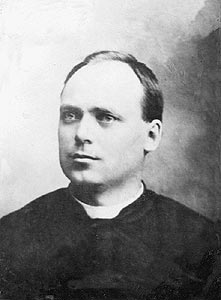Settling In: Building a Dwelling
Upon arriving on in Madawaska soil, the settlers needed to build shelters. Rev Thomas Albert, author of Histoire du Madawaska writes,: « “Thus, in the fall of 1787 we could see more than twenty smoking chimneys as evidence of colonization and hastened hurried settlement in the Madawaska region.” ». What did those shelters look like, having been constructed hastily, and with primitive material and a few rudimentary tools?
T. Albert describes them as follows :
Those dwellings (...) were made of logs, caulked with moss and covered with birch bark (...). The cottages contained only one room with, at the most, a couple of windows, facing south, which were covered with canvass during winter. At the center of the room was found a hearth with a chimney made of stones, cemented together with a kind of mortar made of clay. The fireplaces, well adapted to cooking food and giving light at night, were better at consuming wood than at providing heat.
If that was the condition of the Madawaska dwellings in 1787, two years after the initial settling, what were they like thirty years later? J. Bouchette, a surveyor, passing through the region in 1815, noticed that "the dwellings are in general properly built and the fields and gardens well cultivated..." (Topographic Description of the Province of Lower Canada.) A more detailed observation is made by J.G. Deane and E. Kavanagh, two Americans who, in 1831, did a census in the territory claimed by Maine and New Brunswick:
The houses are nearly all built of timber, and are of simple construction. Some contain one room, some two, and a few more than two. Many are clapboarded, some are painted, and nearly all are well made and warm..
Briefly, the Madawaska dwellings of old were probably not very different from those of their Acadian and Canadian compatriots.
1989
















